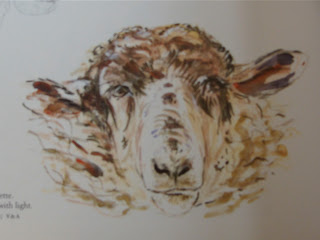 Beatrix Potter, the beloved author of Peter Rabbit and a total of 23 published works is our Author /Illustrator pick this month. Kindergartners have listened to several accounts of her amazing life and learned that she was a lonely little girl who was a gifted artist as early as 8 years old. Potter, whose father was a talented artist and photographer in his own right, indulged her in private art lessons, museums, and harsh critique. Several of her illustrations of fungi were so impressive they were desired to use in Science journals until it was discovered that the illustrations were made by a women and a young person.
Beatrix Potter, the beloved author of Peter Rabbit and a total of 23 published works is our Author /Illustrator pick this month. Kindergartners have listened to several accounts of her amazing life and learned that she was a lonely little girl who was a gifted artist as early as 8 years old. Potter, whose father was a talented artist and photographer in his own right, indulged her in private art lessons, museums, and harsh critique. Several of her illustrations of fungi were so impressive they were desired to use in Science journals until it was discovered that the illustrations were made by a women and a young person.
 Beatrix and her brother were allowed to have a menagerie of animals and insects (including rabbits, mice, and beetles) in their upstairs nursery of their home in London usually brought back from their periodic visits to the country side. These unpredictable critters were the inspiration for the well-dressed characters in her memorable stories.
Beatrix and her brother were allowed to have a menagerie of animals and insects (including rabbits, mice, and beetles) in their upstairs nursery of their home in London usually brought back from their periodic visits to the country side. These unpredictable critters were the inspiration for the well-dressed characters in her memorable stories.
As a child, Potter penned encrypted journal entries and as an adult, wrote beautifully detailed letters to children that often included her stories and illustrations. The story of Peter Rabbit, we discovered, was actually included in a letter of cheer to a very sick child named Noel. After listening to this information, Kindergartners were concerned about what kinds of illnesses could make a child sick. We learned that Young Beatrix was often sick herself and found pictures of her with short hair after a bout with rheumatic fever. More discussion included questions from the children about what illnesses could make one's hair fall out, how Cancer treatments could result in hair loss, and more importantly how, "Healthy kids who take care of themselves, like in our class, probably do not have to worry about it."-Sana
 As a true woman pioneer, Beatrix Potter oversaw every step of her book publication process including the quality of the reproduction's illustration colors and insisted that the format of the books be "just the right size to fit into a child's hand.'' Beatrix Potter continued to pursue many interests throughout her long lifetime that included designing greeting cards and a board game, acquiring several homes (rare for a woman at that time), raising award winning Herdwick sheep, and purchasing large pieces of property to be used as a nature preserve that still exists in England today.
As a true woman pioneer, Beatrix Potter oversaw every step of her book publication process including the quality of the reproduction's illustration colors and insisted that the format of the books be "just the right size to fit into a child's hand.'' Beatrix Potter continued to pursue many interests throughout her long lifetime that included designing greeting cards and a board game, acquiring several homes (rare for a woman at that time), raising award winning Herdwick sheep, and purchasing large pieces of property to be used as a nature preserve that still exists in England today.
Some of our vocabulary this month included "naughty", "nursery", "pinny" (pinafore apron), shanty, and "kerchief" (handkerchief). We discussed what it meant that Mrs. Mac Gregor was putting on her "good bonnet" and how the distance between farms and cities may impact what one eats. One clever Kindergartner even mentioned how we were once again talking about our September theme, "Farm to Table!"
At the beginning of our "Author/Illustrator" theme unit, Kindergartners were given the task to write their own animal stories. Lots of discussion ensued based on past experiences with animals (wild and domestic) and oddly enough recounts of dreams. The children were encouraged to "write" down through words, pictures, and/or symbols their thoughts. Lots of creativity erupted. Dictated stories were lengthy, vivid and imaginative. Kindergartners even tried their hand at encrypted writing like Young Beatrix did in her journals. ( It is said that Beatrix Potter wrote whole journals in a language known only to herself.) We compared this way of secret writing with our knowledge of Egyptian hieroglyphics discussed a few months ago during our "Ancient Civilizations" theme unit. Kindergartners donned feather pens dipped in brown ink and scribbled away. Lots of giggles transpired but some of those secret stories are yet to be told!!
Feather "pens" and brown ink are used to add "Potteresque" inspiration to our writing activity.











.jpg)
-1.jpg)












